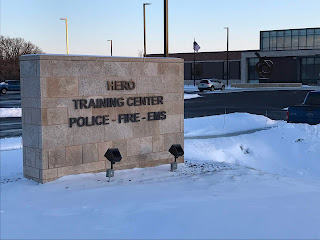Internal investigations are difficult, and employment-related claims can be costly. The League of Minnesota Cities Insurance Trust (LMCIT) data indicates that employment-related liability costs increased from 13% of total liability during 2011-2014 to 20% in 2015-2018. The data for 2019 is not complete but appears to continue this trend of increasing costs.
I reached out to our human resources staff with some questions:
Q: What can an administrator/supervisor do ahead of time that would aid them in handling an internal complaint?
A: As a good supervisor, you want to ensure your employees are aware of the appropriate channels available to raise workplace concerns. If you’re not clear on the process yourself, now is a great to time to read over your city policies and applicable collective bargaining agreements, as well as to talk with HR and your city attorney about how your city’s complaint reporting procedures work.
Generally speaking, many city personnel policies require that if an employee feels they are the victim of harassment or discrimination — or are aware of a workplace violation — then they should report it to their supervisor, HR, or another position within the organization. Once you understand the reporting process, be sure to reiterate with your employees that the city takes workplace concerns seriously by reminding them of the reporting channels available to them to maintain a safe and productive workplace.
If the complaint is against a police officer, the city should make sure it follows its own police department policy and the Peace Officer Discipline Procedures Act. Failure to do so is very problematic and can be cause for action against the chief’s license (Minn. R. 6700.2600).
Q: What is the first step a supervisor or administrator should follow when they receive an internal complaint?
A: Listen carefully to what is shared by the employee, and document what you hear. You can think of your role in this process as focusing on the issue described to you by the employee. Document who was involved, who saw or heard the incident, what happened, when and where the incident occurred, and what actions were taken.
It can be helpful to ask the reporting employee how the incident is affecting him or her, and whether they feel they can comfortably return to work. While documenting these important intake points, this is not the time to try and resolve the issue, express doubts about what is being reported by the employee by asking a lot of probing questions, or make comments such as, “I have a hard time believing this happened.” Thank the employee for bringing the concern forward.
As a supervisor, you are an agent of the city. That means you are the city and the city is you. As such, you are held to a higher standard of behavior with certain legal obligations to report certain workplace complaints.
When you’re not sure whether a concern raised is an employee simply expressing dissatisfaction or is an allegation of a policy violation, err on the side of seeking advice from the city attorney. That discussion should include a decision on whether to formally investigate, who will investigate, and whether the subject of the complaint should be on leave or have work adjusted.
Some cities require that supervisors report complaints directly to HR or the city attorney, so make sure you know who you need to bring the concern to in your organization. In all cases, ignoring a workplace complaint and hoping it will just go away is probably the worst possible thing you can do as a supervisor, both professionally and legally.
Q: What about someone stopping by and starting out the conversation with, “I don’t want you to do say anything to anyone about my concerns”?
A: In the supervisory role and as an agent of the city, you cannot promise confidentiality. Your response to a request like this should include something such as, “I handle concerns as discreetly as I can, but please know that I’m under an obligation to report allegations of workplace violations to city management, regardless of whether you or I personally want it to go forward.”
Q: What’s next?
A: If you haven’t already done so, you need to promptly bring the issue forward to your next management level, HR, or the city attorney. The decision-makers will have to decide whether to commence a formal investigation, whether to retain an independent investigator, whether to place the accused employee on leave (or make other adjustments), and how to address the complainant’s work environment if she/he expresses reluctance to continue working while an investigation is pending.
There can be timeframes associated with grievance processing, so bringing the issue forward in a timely matter is vital!
Follow the protocol HR or your city attorney outlines. It’s a great rule of thumb to avoid talking about workplace concerns with others unless they are on a need-to-know basis.
Also avoiding any retaliatory behavior is key to maintaining the integrity of your city’s complaint process. Did you know retaliation charges were the most common charge filed with the U.S. Equal Employment Opportunity Commission in 2019 — making up 51.6% of all charges filed?
Here are some common retaliatory actions to avoid, but be sure to touch base with your city attorney if you have any questions about how to handle any changes to scheduling or assignments following an employee raising a workplace concern:
- Ignoring the reporting employee in meetings and other workplace activities.
- Firing, demoting, disciplining, or otherwise treating the reporting employee differently.
- Criticizing the reporting employee for raising a concern.
- Discussing the complaint with anyone within the city, other than those with a business need to know, such as human resources and the city attorney.
Q: What are some common problem areas you see in administrators handling internal complaints?
A: Ignoring a problem and hoping it will just go away is probably the worst possible thing you can do as a supervisor, both professionally and legally. It is important to be thoughtful about deciding who will investigate the complaint and to communicate with the complainant periodically throughout the process.
Additionally, here are other bad actions to avoid:
- Engaging in retaliatory behavior.
- Joking about the incident.
- Discussing or emailing the concern with others, unless they include individuals on a need-to-know basis in your organization. Not sure if someone is a need-to-know individual? Be sure to ask HR or the city attorney.
Q: Yikes! All of this seems a little overwhelming about what I can and cannot say when an employee comes into my office with a workplace concern.
A: As a supervisor, you oversee the day-to-day performance of your employees. In your management role, you likely excel in your organizational and communication skills. Your effective communication skills are even more crucial when you receive an employee complaint.
So learn about your city’s complaint procedure, ensure your employees are familiar with the process to raise workplace concerns, and be cognizant that as a supervisor you are held to a higher standard with legal obligations to share workplace complaints so they may be investigated appropriately.
Know where to go if you have any questions within the complaint process (likely your HR team or the city attorney). Following these crucial steps will help you not only continue your great leadership of your team, but also set the city up for success in promoting a safe and productive workplace!
Thanks to the League of Minnesota Cities Human Resources team for their advice and thoughtful responses.
Up next: More on the Heart Attack Detection Program from the International Association of Fire Chiefs
Stay safe,
Rob




 A guest post by Bob Swenson, Director of Advance Driving Skills at the Minnesota Highway Safety and Research Center
A guest post by Bob Swenson, Director of Advance Driving Skills at the Minnesota Highway Safety and Research Center























